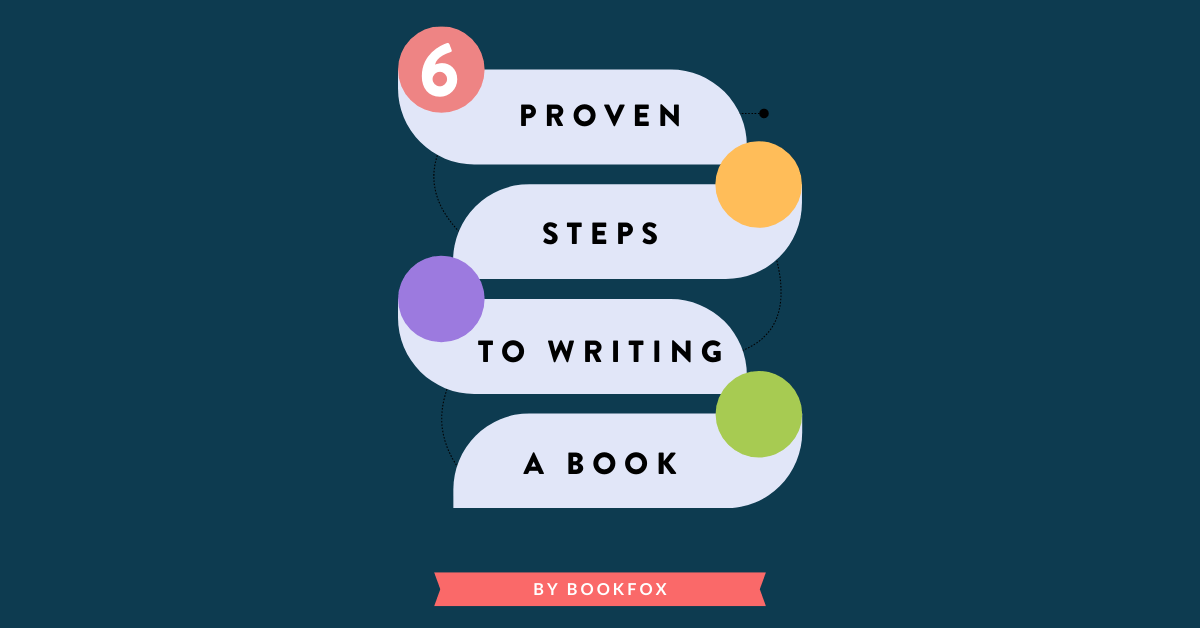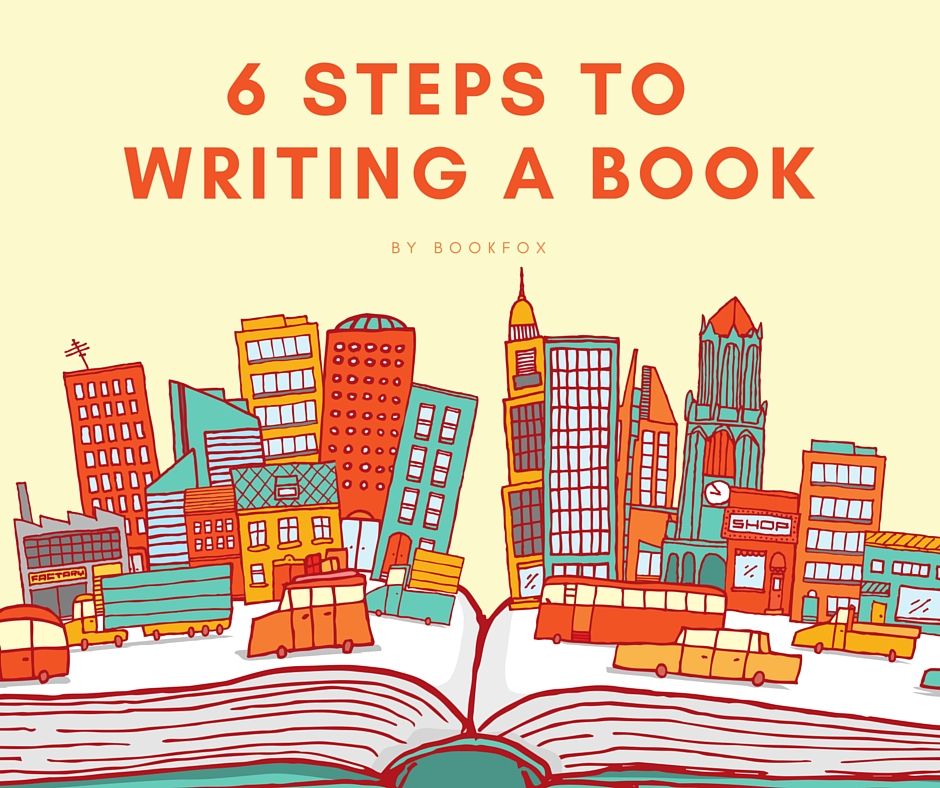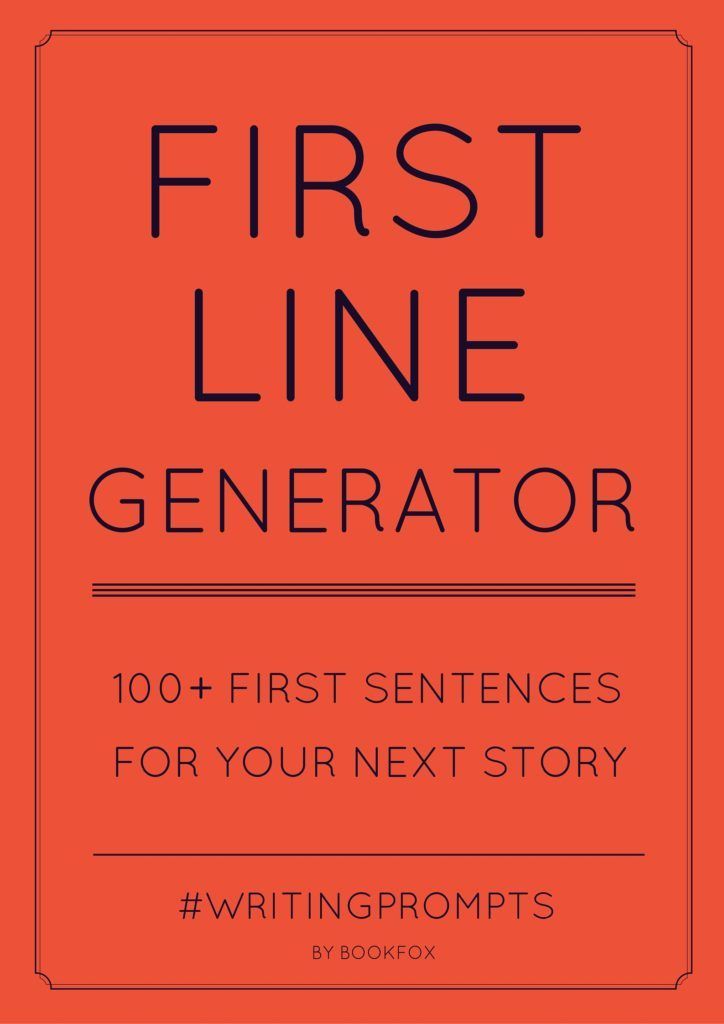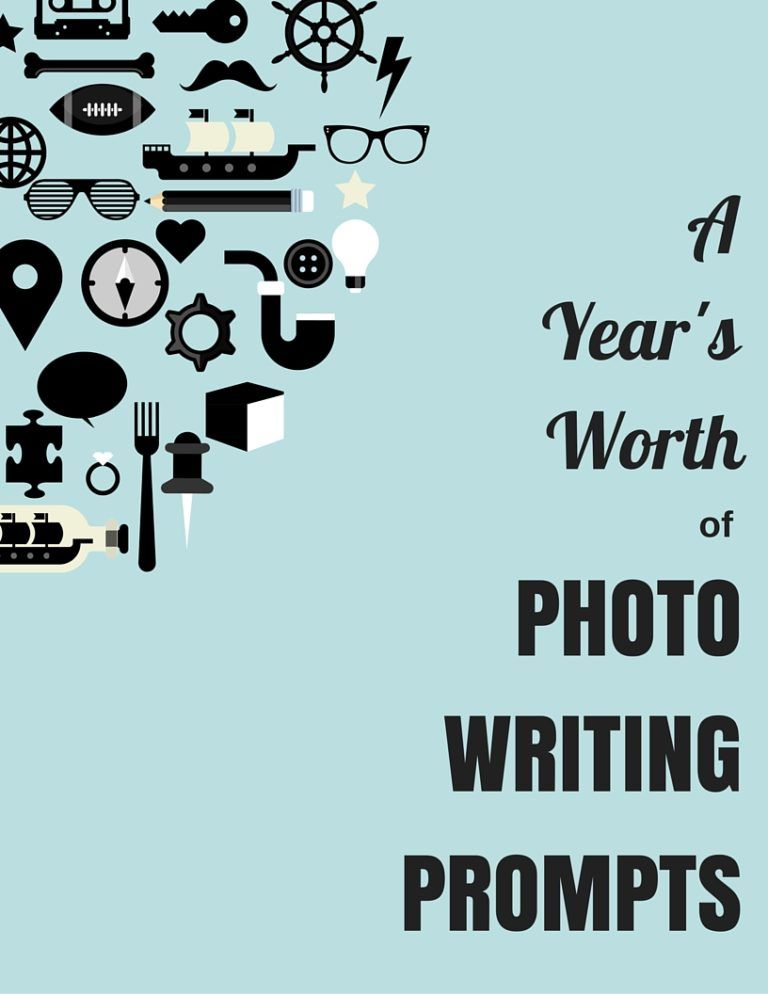

“Books are people
What appears to be but simple pages,
Are pieces of what was once alive:
Yellow and wrinkled and ripped and crisp.
Pieces of love and hatred and strife.”
Why would anyone want to write a book?
The headaches, the long hours, the frustration, the tears, the sleepless nights, the overwhelming loom of failure, and for what? All because a writer is vain enough to believe that her story is good enough for the world to know?
The short answer: Yes.
The long answer:
Everyone has that talent that excites them, that special thing they love to do, that creative spark of the Divine in them. They can’t help but love what they do despite all the risks and everything else involved — even if they’re terrible at it.
If you’re on this page, then you may be like me. Your special superpower may be writing.
Writing a book is pretty daunting, risk-filled, and exciting, but when you step back and examine the steps to writing a book, you realize that it’s as simple or as hard as you make it.
Is it difficult? Yes. Can you do it? Yes. What is it going to take? Work. Lots of hard work.
If you’ve got the ambition and perseverance to do it, then you’re already halfway there; but I’ve outlined a few steps to writing a book below to not only help steer your way around the winding road of successfully writing a book, but also to keep you motivated along the way.
1. Pick a Plot
 Pick something that you love to write about.
Pick something that you love to write about.
You may not even know the genre, and that’s okay.
Do you like writing about teenage love stories? Grown up love stories? Talking animals? Wars in the middle ages? Look at your bookshelf and see what it is that you like to read. You can find out how to classify it later.
Now, look up the seven basic plots and pick one that you think your story matches. This will help guide you as you write your book.
If you tell a story that means something to you, something that you’re excited about, and you mold it to fit a classic narrative, you will have a powerful story.
2. Pick a Character
 For some, it’s not a plot so much as it is a character. Talk about your character and tell the story of his or her life. Eventually, you’ll end up with something you can weave together into a novel.
For some, it’s not a plot so much as it is a character. Talk about your character and tell the story of his or her life. Eventually, you’ll end up with something you can weave together into a novel.
Come up with a list of your 10 favorite characters in novels. Go do it right now.
Done it? Good. Now figure out what they have in common. Are they outsiders? Are they underdogs? Do they have superpowers?
Once you’ve figured out what they have in common, try to create a memorable character based on a mixture of those ideas, and by answering this character questionnaire.
This character will drive your plot. In fact, this character might even demand that you change your plot, and that’s okay. If the character gets in the driving seat, it means you’ve created a real character.
3. Here are 4 Methods of Writing — Pick Your Favorite
The most important step of writing a book is to write. This sounds dumb, but so many writers fail at this.
As you write more and more, you’ll develop a writing method that works for you, and it takes a bit of trial and error to find it. But writing in such a way that you actually enjoy the process is like finding a golden nugget in an abandoned mine.
The following are just a handful of suggested writing methods to experiment around with – if you haven’t already found your niche.
1. Pomodoro Technique
 I once read an article about two accomplished (yet very different) authors. The professional writer would sit down for a set time every single day and write until that time limit was up.
I once read an article about two accomplished (yet very different) authors. The professional writer would sit down for a set time every single day and write until that time limit was up.
This is pretty difficult – especially if you don’t have a game plan outlined. I’ve taken up to three hours on a single paragraph before. Why? Well, first I had to check my email, then text somebody. My mind was running all over the place except for the place that I needed it to be.
How can you stay focused if you have set aside a specific timeframe to write in?
One of the best ways is to use Pomodoro Technique. Basically how to do it is this:
- Choose how many hours you are going to write for. Let’s say five.
- Now, set a timer for 25 minutes and write nonstop with no distractions.
- At the end of the 25 minutes, take a 5 minute break to stretch, grab a snack, check your twitter, or whatever.
- Then get right back at it. You’ll end up being a lot more productive during the time period that you’ve set for yourself.
It helps to have a quiet place and a bit of an outline for what you’re going to write. You can even come up with the outline during the first 25 minutes of your writing circuit.
2. Mini-Goal Technique
 For those of us who can’t lay aside a specific part of the day to write because of kids, demanding jobs, or anything else, one of the best ways to find motivation is to set goals.
For those of us who can’t lay aside a specific part of the day to write because of kids, demanding jobs, or anything else, one of the best ways to find motivation is to set goals.
Goals are essential for any writer, but I’m going to use the example of the other writer in the above mentioned article — the non-professional one that had a full-time job on the side. That man was the master of small goals. He literally wrote every chance he had — on post-it notes, napkins at restaurants, emailing scenes to himself.
Some of you know the struggle.
What motivated him, however, were the small goals that he set for himself. For example, set a goal for a word minimum of 350 words everyday or only on weekend days, a goal for writing a specific scene by the end of the week, or waking up thirty minutes early tomorrow to outline how your dialogue between two main characters should go.
And don’t be afraid to change it up. The same goal gets boring after a while.
This is probably the technique used by most writers; however, by implementing small goals or deadlines (and enforcing them), writers find the motivation to push themselves through.
3. Snowflake Method
 A friend of mine uses something that is known as the Snowflake Method, which is basically an extension on having an outline for your novel.
A friend of mine uses something that is known as the Snowflake Method, which is basically an extension on having an outline for your novel.
Randy Ingermanson, the creator of the method, does a great, in-depth explanation of what to do, but the summarized version is this:
- Write a one-sentence summary of your novel.
- Turn the sentence into a full paragraph describing the story set-up, major conflicts, and the ending of the novel.
- Write a one page summary on each of your major characters.
- Expand each sentence in your summary paragraph from step 2 into a full paragraph.
- Write a one page description of each major character, and a half-page description of the minor characters telling the story from their point of view.
- Expand each paragraph from step 4 into a whole page.
- Expand your character descriptions into charts that detail everything there is to know about them (birthday, favorite color, how they will be changed at the end of the novel, etc.).
- Take your four page story synopsis from step 6, and list all the scenes you’ll need to turn the story into a novel.
- (Optional) Take each line of your list from step 8, and turn them into paragraphs inserting dialogue where needed.
- Your detailed outline is complete! Now, begin writing!
This seems like a long process to go through, but it may be exactly what works for you; and it’s well worth the time if at the end of it all, you have a tidy first draft.
4. Jigsaw Method
 After years of trial, error, and frustration, I’m going to suggest a method that I’ve found works for me.
After years of trial, error, and frustration, I’m going to suggest a method that I’ve found works for me.
I don’t write from beginning to end or end to beginning. I write by scenes; as in, whatever part of the story I’m excited about writing, I write that, and I don’t just mean chapters. I do the same thing with small scenes – skipping down to the part I really want to write then going back and tying it all together.
For me it’s easiest because, if I have a good scene with good wording on my mind right then and I waste time trying to write up to it, I might lose it.
It’s happened before.
So when I go into my Documents, there’s not just one big “Christian’s Novel” sitting there. All of my chapters are separated out by titles so I can tell them apart, and these are scenes from all over the novel — beginning, middle, and end.
This technique would probably only work if you knew your story from beginning to end, inside and out.
Use some of the steps from one technique, or combine some of the steps from three or four different techniques. Keep looking and keep experimenting until you find something that works for you — and works in a way that you actually enjoy.
4. Practice Writing
Now that you have a novel idea and a method for writing, you need to grow your skill up to a point where you can actually get written what you want to write.
Have you ever had trouble getting what is in your mind out onto the page in a way that is actually as great as it was in your head?
We’ve all been there.
An important part of writing a book involves developing the skills necessary to presenting a good story. Most of the time, the story is good in our heads. It’s the portraying part that we have trouble with.
Ever see or experience something unimaginably funny, and you try to tell your friend about it, but they just don’t get it? They just had to be there to understand.
That’s sort of like writing. It’s our job to make that reader feel like they are there (in our minds, experiencing the story we create).
Writing in such a way takes talent, and talent takes work.
When I first started out on my blog, this was the purpose that I had in mind. I had learned that (unfortunately), talent does not grow unless you practice.
I can use the example of an artist, a basketball player, a musician. The only way to get their stuff into a museum, to make it to the NBA, or to find themselves sitting in a concert hall is to practice, and writers are no different.
You make think that this is going to be awful, as in, worse than the editing stage. (It’s not, I promise.) I actually really enjoy practicing to write. Most writers already do this without even realizing it, but with a little added effort, imagination, and difficulty, they can turn a two star story into a four star one.
How to practice writing
 1. The first is obvious: Writing Prompts.
1. The first is obvious: Writing Prompts.
This website has an abundance of writing prompts and exercises. The internet and Pinterest also have a lot of cool ideas.
Whether you write 100 words or 1000 words, forcing yourself to write about a scene that you had never really considered in the past develops your skills. What I would do was take a writing prompt, think of a story, and write a chapter everyday for almost every day of the week, and at the end of the week, I’d have something like an excerpt from a book.
2. The second is something I call: Picture Stories.
This is for all you Pinterest lovers out there. Get on Pinterest, Google images, or whatever, and look up Fantasy art, photographs, or anything you want. Write at least a 50 word story based around the people or scene going on in the picture (even if it’s nothing but  dialogue). This helps develop your imagination to a point that overcoming writer’s block is fairly easy. You push your mind to adapt more quickly by forcing it to develop interesting stories.
dialogue). This helps develop your imagination to a point that overcoming writer’s block is fairly easy. You push your mind to adapt more quickly by forcing it to develop interesting stories.
If you want to be silly, here’s a list of emoji writing prompts, or a year’s worth of 52 picture writing prompts.
I did this twice a day, and while not everything that I wrote was even “blog-posting worthy,” within a month, I could actually see a difference in my writing skills; plus, I had a ton of fun doing it.
Basically, the only way you’re going to get better at writing is to write, and people, I know what I’m talking about.
5. Reading
 I know that you’ve heard this one at least a thousand times, but I’m not here to cram the idea down your throat.
I know that you’ve heard this one at least a thousand times, but I’m not here to cram the idea down your throat.
I know. It’s hard to read when you’re trying to spend as much time as you can writing, but reading still has its place in the steps to writing a book.
Reading comes with a ton of benefits such as:
- Learning how to develop a plot (how soon the villain shows up; minimum number of subplots to keep it interesting)
- Learning how to develop a writing style (1st or 3rd POV; how many details are too many details)
- Growing the imagination
- Using allusions from the tons of knowledge you’ve gained to help make a point or scene more interesting (Ex. From his list of potential victims, the killer didn’t murder the author because, just as the king allowed Scheherazade to live day by day in anticipation of her next story, the killer wanted to know how the author’s sequel would end.)
- Picking out bits and pieces from here, there, and everywhere to develop your own characters and scenes. (Your villain may have the heart of Judas Iscariot, the brains of Sherlock Holmes, and the class of Dorian Gray.)
You get the idea. Reading is a big deal. I’ve even heard some people say that writers are the combination of everything they’ve ever read in their lives. In a way, this is true. Reading is one of the only ways to gain knowledge.
In fact, one of my old grade school teachers constantly pounded into the heads of her eighth grade class that the only ways to get smarter was to read books, or to hang out with people who read books.
Even if you dislike reading or find it discouraging, find a way to push through.
I, too, struggled with this for a while. I’d beat myself up everytime I read a story that I felt had a better storyline than mine (Harry Potter), or the writer had a better style than mine (John Green), and I would usually alter my story (for the worse) trying to make it sound deeper and better.
I eventually got over it, and these are a few tips that aided along the way.
- If you hate a book, stop reading it. Immediately.
- DO NOT get halfway through and look up the ending on Wikipedia or something. (I am terrible for being an impatient reader.) You are missing the whole purpose of reading the story if you do this.
- Read something with a similar genre to what you write. (I promise it will encourage you to write your own story).
- Choose books that are written by authors close to your skill level
– this can be discovered by simply opening the book and reading some sample pages or by looking up reviews.
– this is not meant to be a lifelong step. Books should challenge your mind and imagination, but if you’re just getting back into the swing of things, I recommend this step for at least a little while. Then, begin reading books better than yours, so you can continue to grow.
- Most importantly, don’t compare your story to someone else’s.
With a bit of time, and a bit of success, you’ll develop your own sure style of writing and build your confidence. Reading is meant to inspire you, empower you to write more, and (especially in your own opinion) make you a better writer.
6. Editing
 Ah, the dreaded, worst stage that causes some writers to rip their hair out, curl up in a defeated ball of tears, or angrily cast their entire manuscript into self-made bonfire.
Ah, the dreaded, worst stage that causes some writers to rip their hair out, curl up in a defeated ball of tears, or angrily cast their entire manuscript into self-made bonfire.
I will confess, this is the worst stage. But don’t skip this crucial last step to writing a book!
Have you ever wrote a masterpiece then go back later to find that it was actually horrible?
I have.
There are a couple of ways you can handle the editing stage.
- Just write. Write it all, then go back with a red pen ready to edit the life out of that poor thing.
- Perfectionists such as myself may go back and edit after every completed chapter until they are ultimately satisfied.
How you choose to edit is based on your style and preferred method of writing, but there are some things that all writers need to do once their book is complete.
- Edit at least once shortly after finishing.
- Give it some time to simmer, then go back. This may take a month, or maybe six months (you can be writing other stuff in the meantime). If you proofread again when the fire’s not hot, you’ll notice things like: “Well, that doesn’t really belong there,” “Too many details,” and “I’ve already said that.” You’ll probably get discouraged, but that’s normal. Don’t stop. Your skills have likely improved from the writing stage to the editing stage especially if you’ve been practicing. Just keep in mind that you’ve already got the hard part behind you.
- Repeat step 2.
Yes, it’s a long process, but there are too many mediocre books out there for you to just not put in the time and effort that a true masterpiece requires (your unique masterpiece). In the end, I promise, you’ll be glad you did it.
Writing a book is not easy. There’s no magic method or guarantee of success. It takes work and lots of it; but if you enjoy it, if it’s rewarding, if you love to weave words into stories to create something wonderful, then every headache, every ounce of hurt pride, and every failure that you get through will be worth it in the end.
But that’s the thing. You have to get through these steps to writing a book. There are plenty of people out there who want to do something but manage to come up with every excuse in the world as to why they can’t. You can’t be that sort of person. You have to lay aside your excuses, and do it.
Now, get writing!

2 comments
Thank you so much for such great tips to help us get that book written!
I am writing a book right now because I love to write I am 13 and I am a writer but none of my stories really got published so I had to write a book abou the agency the had a very crucial case the case was about a missing bomb in a school filled with student the 2 agents from the agency went under cover as students the at the middle of the story the find the missing bomb but they find out that the made allot of friends and had to tell them the biggest secret in there life. This is my story thank you for giving me the confidence for me and my book ❤️